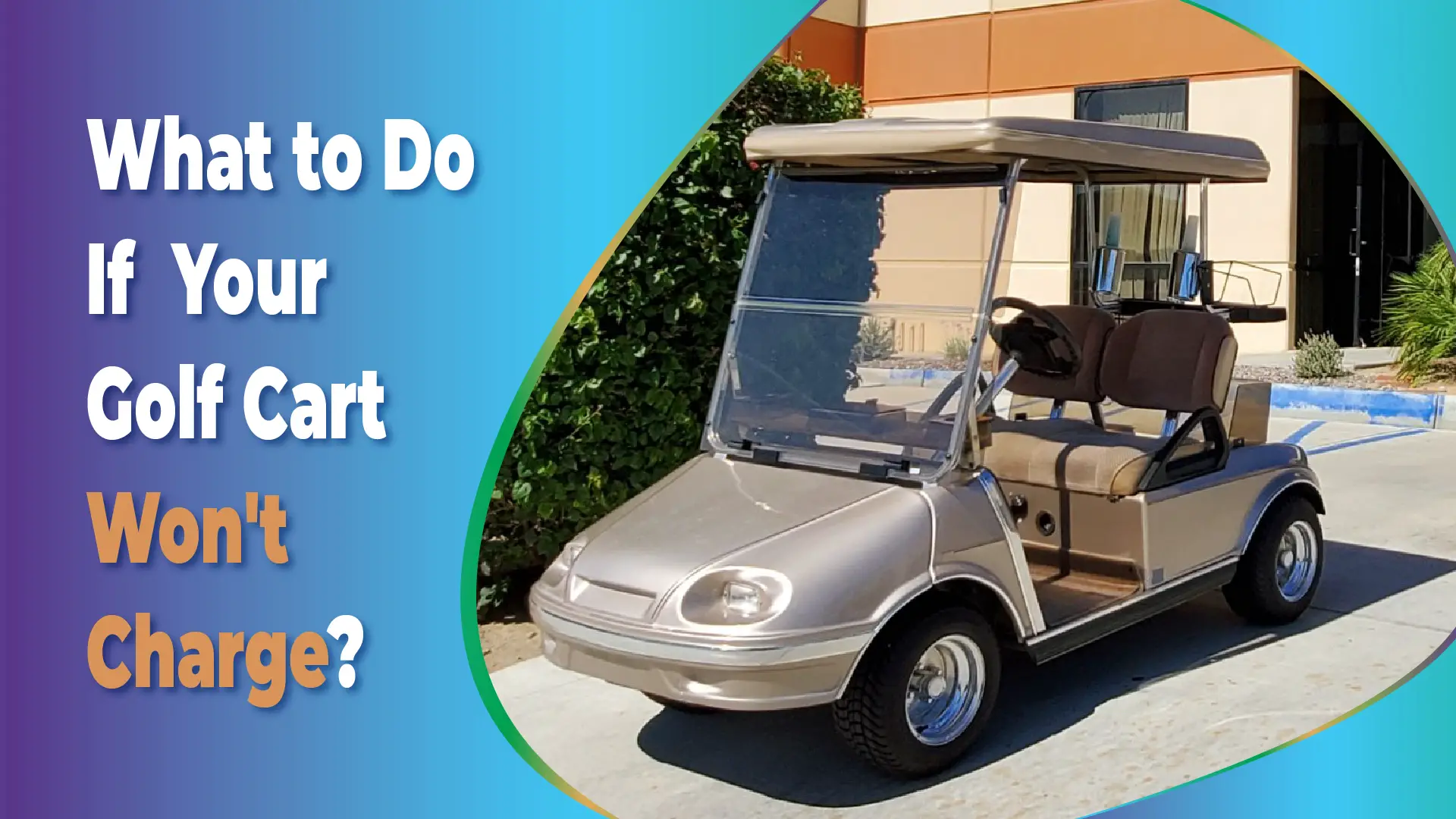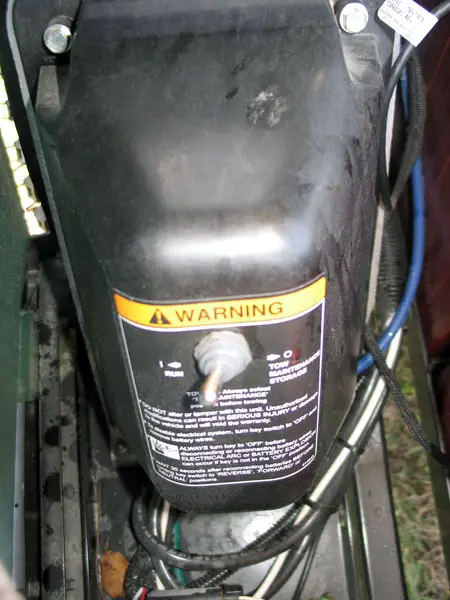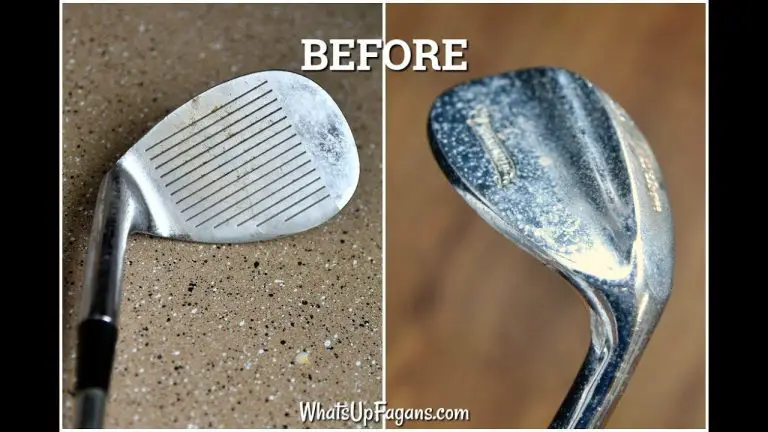Why Your Golf Cart Isn’T Charging

Is your golf cart refusing to charge, leaving you frustrated and stranded? A properly functioning charging system is crucial for the performance and longevity of your golf cart. When faced with a non-charging golf cart, it’s essential to understand the potential causes behind this issue and explore effective solutions to get your cart back on the green.
In this comprehensive guide, we will delve into the reasons why your golf cart isn’t charging and provide you with the knowledge and troubleshooting techniques to diagnose and resolve the problem. We will explore the key components of the charging system, common causes of charging issues, and offer practical tips to maximize the performance and longevity of your golf cart’s charging system.
Understanding the intricate workings of the golf cart’s charging system is the first step towards resolving the issue. From the batteries that provide the power, to the charger that replenishes the charge, and the wiring that connects them, each component plays a vital role in ensuring a smooth charging process. By gaining insight into these components and how they interact, you’ll be better equipped to identify the specific cause of your golf cart’s charging problem.
Next, we will delve into the common causes behind a golf cart’s failure to charge. These can include battery-related issues such as age, loose connections, or dead batteries. Charger problems like faulty connections or charger malfunctions can also prevent effective charging. Wiring faults, such as damaged or loose wires, can disrupt the power flow from the charger to the batteries. By understanding these causes, you can narrow down the possibilities and focus on resolving the specific issue affecting your golf cart.
With a thorough understanding of the charging system and its potential problems, we will provide a step-by-step diagnostic process to help you identify the cause of your golf cart’s non-charging issue. From preliminary checks to battery and charger testing, we will guide you through the necessary steps to diagnose the problem accurately. Additionally, we will discuss common solutions to address each identified issue, such as tightening connections, replacing dead batteries, repairing or replacing faulty chargers, and fixing wiring faults.
Preventive maintenance is key to avoiding future charging problems. We will share tips to help you maintain a healthy charging system, including proper battery maintenance, charger care, and regular inspection of wiring connections. By implementing these preventive measures, you can extend the life of your batteries, optimize charging performance, and minimize the risk of encountering non-charging issues in the future.
Join us on this informative journey as we uncover the reasons behind why your golf cart isn’t charging and empower you with the knowledge and tools to diagnose, resolve, and prevent charging problems. Get ready to get your golf cart back on track and enjoy uninterrupted rounds on the course with a fully charged and reliable golf cart.

Understanding the Golf Cart Charging System
To comprehend why your golf cart isn’t charging, it’s crucial to familiarize yourself with the key components of the charging system. Let’s explore these components and how they work together to provide power to your golf cart.
Exploring the Key Components of a Golf Cart Charging System
| Batteries | Charger | Wiring |
|---|---|---|
| Power source for the golf cart | Device that replenishes battery charge | Connects batteries and charger |
The batteries serve as the power source for the golf cart, providing the necessary energy for operation. The charger is responsible for replenishing the battery charge, ensuring the batteries stay charged and ready for use. Wiring connects the batteries and charger, forming a circuit through which the energy flows.
How the Charging System Works
Understanding the charging process is essential for troubleshooting and resolving charging issues. Let’s explore how the charging system operates.
Charging Cycle
The charging cycle involves the charger delivering a controlled current to the batteries to restore their charge. The charger regulates the charging process, ensuring that the batteries receive the appropriate voltage and current levels to charge effectively.
Charger Types
Different types of chargers are available for golf carts, including onboard chargers and portable chargers. Onboard chargers are built into the golf cart and provide a convenient charging solution. Portable chargers, on the other hand, allow you to charge the batteries separately from the golf cart. Understanding the type of charger you have will help in troubleshooting charging problems.
Common Causes of a Golf Cart Not Charging
When your golf cart fails to charge, several potential causes may be at play. Understanding these common causes will enable you to pinpoint the issue and take the necessary steps to resolve it.
Battery Issues
The batteries are a critical component of the charging system, and various battery-related factors can lead to charging problems.
Battery Age and Condition
Batteries have a limited lifespan, and as they age, their ability to hold a charge diminishes. If your golf cart batteries are old and worn out, they may struggle to charge properly, resulting in charging issues.
Loose or Corroded Battery Connections
Loose or corroded battery connections can disrupt the flow of power between the batteries and the charger, preventing effective charging. It’s important to ensure that the battery connections are secure and free from corrosion.
Dead Batteries
If the batteries in your golf cart have reached the end of their life cycle, they may no longer hold a charge, rendering them unable to recharge. In such cases, replacing the dead batteries becomes necessary to restore the charging capability of your golf cart.
Charger Problems
Issues with the charger itself can also cause charging problems in your golf cart.
Faulty Charger Connections
Proper connections between the charger and the golf cart’s charging port are crucial for effective charging. Loose or faulty connections can disrupt the charging process and prevent the batteries from charging properly.
Charger Malfunction
Chargers can experience internal malfunctions that inhibit their ability to deliver the required voltage and current to the batteries. Malfunctioning chargers may not charge the batteries at all or may provide insufficient charging, resulting in incomplete charging cycles.
Incompatible Charger
Using an incompatible charger for your golf cart can lead to charging issues. Each golf cart model and battery type has specific charging requirements, and using a charger that does not meet those requirements can result in ineffective charging or potential damage to the batteries.
Wiring Faults
Problems with the wiring connecting the batteries and the charger can impede the charging process.
Damaged or Worn Wiring
Wiring that is damaged, frayed, or worn out can interrupt the flow of power from the charger to the batteries, preventing proper charging. It’s important to regularly inspect the wiring and address any signs of damage promptly.
Loose or Disconnected Wires
Loose or disconnected wires can disrupt the circuit connection between the charger and the batteries, leading to charging issues. Ensure that all wiring connections are secure and properly connected.
Diagnosing and Resolving the Issue
When your golf cart isn’t charging, it’s essential to diagnose the problem accurately to determine the appropriate course of action. Here’s a step-by-step approach to help you diagnose and resolve the issue effectively.
Preliminary Checks
Start by conducting some preliminary checks to identify any obvious issues.
- Perform a visual inspection of the batteries, charger, and wiring. Look for loose connections, corrosion, or any visible damage that could affect the charging process.
- Check the charger operation by plugging it into a power source and ensuring that the indicator lights or display function as expected. This will help determine if the charger is receiving power and functioning properly.
Battery Testing
Testing the batteries will provide valuable insight into their condition and charging capability.
- Conduct a battery voltage test using a multimeter to measure the voltage levels of each battery. Compare the readings with the manufacturer’s specifications to determine if the batteries have sufficient charge.
- Perform a load test to assess the performance of the batteries under load. This test simulates the demands placed on the batteries during operation and helps identify any weak or failing batteries.
Charger Testing
Testing the charger will help determine if it is functioning correctly and delivering the necessary charging output.
- Conduct a charger output test using a multimeter to measure the voltage and current output of the charger. Compare the readings with the charger’s specifications to ensure it is providing the expected charging power.
- Verify that the charger is compatible with your golf cart and battery type. Check the manufacturer’s specifications or consult the golf cart’s manual to ensure you are using the correct charger.
Addressing Common Issues
Based on the diagnostic findings, you can take appropriate actions to address the specific issues causing the charging problem.
- Tighten or clean battery connections to ensure secure and corrosion-free contacts. Use a wire brush to remove any corrosion from the terminals and connectors.
- If the batteries are dead or severely depleted, they may need to be replaced. Consult with a golf cart specialist or battery supplier to select the appropriate batteries for your golf cart model.
- If the charger is faulty or malfunctioning, consider repairing or replacing it. Consult with a qualified technician or contact the charger manufacturer for assistance.
- In the case of wiring faults, such as damaged or loose wires, repair or replace the affected wiring to restore proper power flow between the batteries and the charger.
It’s important to follow proper safety protocols and, if needed, seek professional assistance when dealing with electrical components and complex repairs.
Preventive Maintenance Tips for a Healthy Charging System
Taking proactive measures and implementing regular maintenance routines can help maintain a healthy charging system for your golf cart. Consider the following preventive maintenance tips:
Battery Maintenance
- Perform regular inspections of the battery connections, ensuring they are clean, tight, and free from corrosion.
- Clean the battery terminals and connectors with a battery terminal cleaner to remove any accumulated corrosion.
- Monitor the battery voltage regularly and recharge the batteries when they reach a certain threshold to avoid deep discharging.
- Follow the manufacturer’s guidelines for battery maintenance, including proper charging practices and avoiding overcharging or undercharging.
Charger Maintenance
- Inspect the charger regularly for any visible damage or signs of wear. If you notice any issues, have it serviced or replaced as necessary.
- Clean the charger’s contacts and connectors to ensure optimal charging efficiency.
- Test the charger’s output periodically to verify that it is delivering the correct voltage and current levels.
- Store the charger in a clean and dry location, protected from extreme temperatures and humidity.
Wiring Maintenance
- Regularly inspect the wiring connections for any signs of damage, wear, or loose connections.
- Secure any loose or disconnected wires and replace any damaged wiring.
- Protect the wiring from exposure to moisture or physical damage by using wire looms or conduit where necessary.
By implementing these preventive maintenance practices, you can prolong the life of your batteries, ensure the charger operates efficiently, and maintain a reliable charging system for your golf cart.
Conclusion
A golf cart that isn’t charging can be a significant inconvenience, but by understanding the components of the charging system and the common causes of charging issues, you can effectively diagnose and resolve the problem. Remember to conduct thorough inspections, perform battery and charger tests, and address any identified issues promptly.
Additionally, adopting preventive maintenance practices such as maintaining clean and secure battery connections, regularly inspecting the charger, and ensuring proper wiring integrity will help keep your golf cart’s charging system in optimal condition.
By following these guidelines and staying proactive in your maintenance efforts, you can ensure a reliable and efficient charging system for your golf cart, allowing you to enjoy uninterrupted rides and prolonging the lifespan of your batteries.





